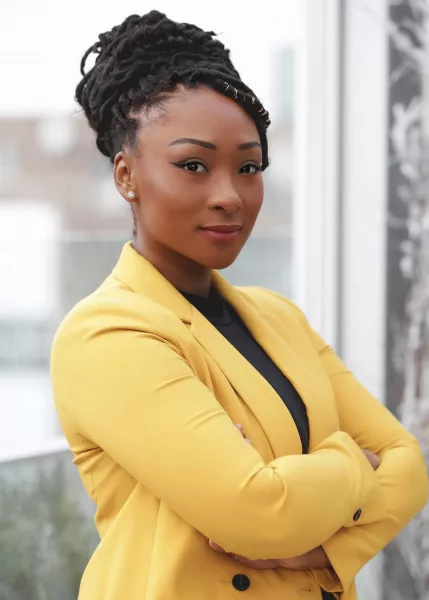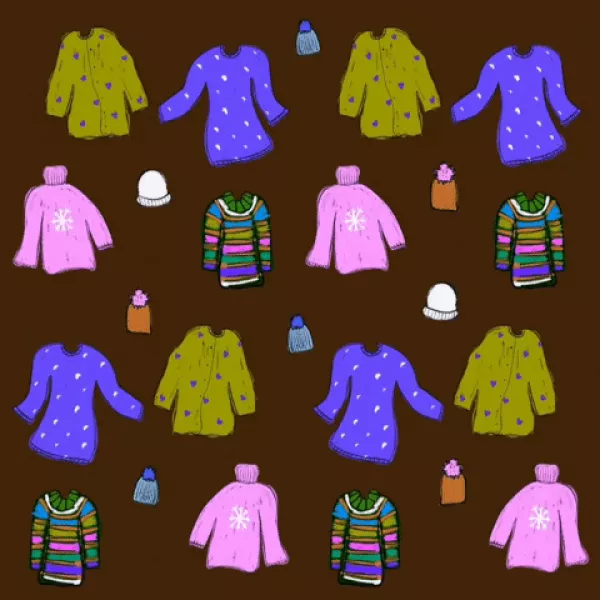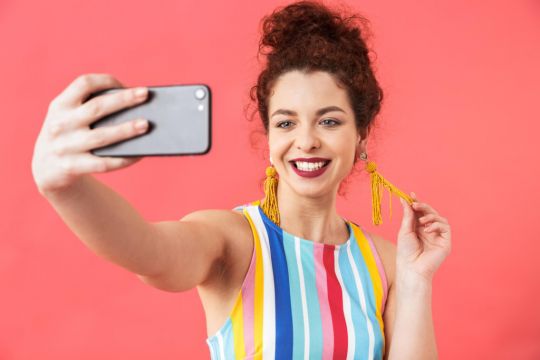For many of us, day-to-day dressing is a balancing act between looking good and feeling comfortable – but how about working your wardrobe in synergy with your body and spirit?
This is where fashion psychology comes in, as refreshing your routine and wearing colourful clothing could help blow away those January blues.
“Dopamine dressing is one of the latest trends to emerge from the pandemic,” says Shakaila Forbes-Bell, a fashion psychologist and founder of website Fashion is Psychology. “I think it was born out of one of the core principles, which underpins why we wear certain clothes, and one of the main reasons is to satisfy our emotional needs.”

“So when you wear something you love, that looks good and new, that brings confidence and makes you feel happy – that happiness is stemmed from a specific neurotransmitter in the brain called dopamine which mediates pleasure and happiness,” she explains.
And the psychological benefits of stepping out in something that brings us pleasure are twofold: “So when we wear something that brings us joy, that area is kind of activated; it gives us that rush and feeling of happiness, so we want to continuously feel that experience.”
Indeed, through her research with Stitch Fix, an online personal styling service, it was found around a third of us experience that boost in our mood when we wear colourful clothing.
Colour has many connections

But it’s not as simple as saying a specific colour can result in a specific kind of emotion. “It’s a lot to do with associations,” Forbes-Bell notes. “Some of them are general, but some can be very specific to you.”
For example, Stitch Fix found people associate the colour yellow with optimism, with sun, with brightness, and those things bring happiness and joy, while 30% said the colour blue makes them feel calm.
The study also found red is associated with feeling energetic. “We can say we associate red with things like love, like lust, and those kind of objects like bright red hearts,” she continues. “So basically we experience certain emotions when we’re wearing certain colours, because we generally associate specific colours with specific things.”

And that’s how colour psychology works when it comes to dopamine dressing: “It’s thinking about the general associations you have, but also the personal associations,” says Forbes-Bell.
Fashion fast-track to feeling happier
To get to grips with how to dress to better your mood, this is where personal styling services such as Stitch Fix come into play. You can partner with one of their expert stylists to help them work through your personal associations.
View this post on Instagram
“So say for example, I associate purple with joy, with accomplishment, with success because I have my own personal associations with purple,” explains Forbes-Bell.
“It might remind me of a family member or particular time in my life. You can put that into the system and work with your expert stylist to help you push more of that colour into your wardrobe.”
Depending on your preferred style and budget, you can personalise the edit to tailor it to your mood – namely feeling more confident, more happy, more bubbly, and wanting to experiment more with colour.
View this post on Instagram
“You put that into your style profile, and then you automatically get those kind of outfits and colours sent to you, so that’s an easy way to inject those kind of mood boosting colours into your wardrobe.”
Inspire confidence with colour by association
Naturally, not all of us feel comfortable wearing brights, especially if monochrome is your middle name. “I feel like an easy way to kind of get over that fear people have with colour is to acknowledge the things you associate with specific colours,” suggests Forbes-Bell.

“If you associate pinks with playfulness, or yellow with optimism, like the survey found, once you acknowledge those positive associations with these colours, you kind of get over that hump of saying, ‘Oh, well, I don’t want one [of that kind of clothing]. I don’t want to be too bright. I don’t want to be too out there.'”
Indeed, by digging a little deeper: “Like mine with purple, that will give a bit more encouragement and motivation to embody those feelings and a push to wear them in your day-to-day life, rather than being bound by the confines of the blacks, the beiges and the greys.”
Funk it up with feel-good accessories
A simple way to elevate a single neutral colour is with eye-catching accessories and nothing screams self-expression like statement jewellery or a bright tote bag. Forbes-Bell thinks it’s an easy way to start, have more fun and be more creative when you might be scared to really embrace colour.
“You know, it can really transform a minimalist outfit to something that’s a bit more unique and special to you.
“Say you don’t want to go all-out red, a red bag or accessory, a pop of purple here, a pop of orange there, that can go a long way into helping you embody the positive traits you associate with those colours.”
Make the most of working from home and experiment
“I think as much as people are really embracing comfort and the psychological benefits that come with comfort dressing, I feel like people are experiencing loungewear fatigue, when you’re just bogged down in the same greys.
“You’re not bound by the confines of an office dress code, right, and I think if people acknowledge that you can experience such a boost from novelty in general.
“So just wearing something new, dressing outside of the norm with outlandish outfits, it can help you separate from the day-to-day kind of boring, humdrum routine lots of us have fallen into with working from home.”

“Experimenting more, even if it is a loungewear outfit, it doesn’t have to be grey, it could be pink, it could be blue, it could be something more expressive.
“I think that will help people really experience both the joy and the comfort and yeah, really help them shake up their day-to-day routines by simply just changing their outfits.”
As Forbes-Bell puts it: “It’s really about how you feel and using your clothes to improve your mood. And then anything that comes out of that is a bonus.”







